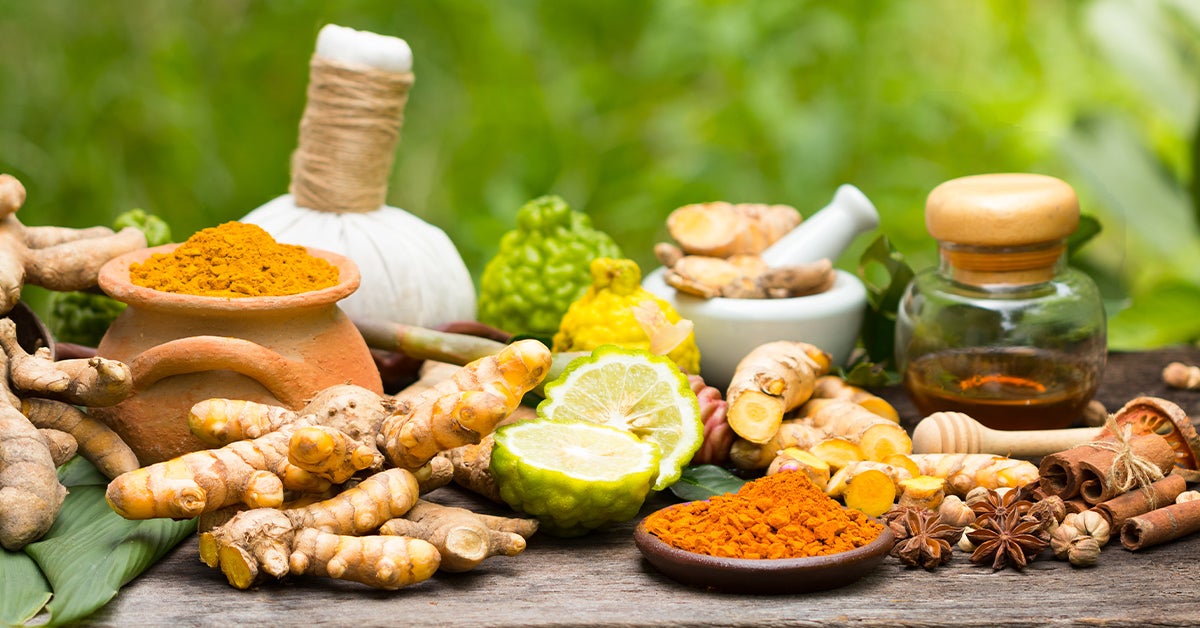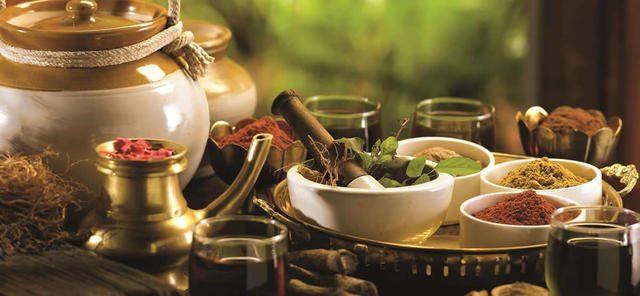Ayurveda is the oldest medical system that is originated from India and is practiced now all across the world. It is said the about 5000 years ago the ancient rishis of India received the gift of Ayurveda from their Hindu gods. Ayurveda considers the body, mind, and spirit to be equally important in the restoration of the innate harmony of the individual. It lay emphasis on the prevention of diseases and maintenance of health.
Ayurveda is a combination of two words where Ayu means life and Veda means Knowing. It is a comprehensive system that deals with health in all its aspects i.e, physical health, spiritual well-being, social welfare, lifestyle, daily living habits, mental balance as well as treating various diseases. The individuals who practice Ayurveda believe that every person is made of five elements i.e, space, fire, air, water and earth. Ayurveda helps us to face the upcoming challenges in life. By balancing our diet and lifestyle we can strengthen the body, mind, and consciousness.
Salient Features of Ayurveda
- Ayurveda is much more than medical science. It is opening the gates of having a healthy life. It helps to establish much-needed peace between the mind, body, and soul.
- Ayurvedic pay more attention to individuality. Each individual is unique and therefore it recommends the most appropriate lifestyle and diet based on every individual’s biological makeup. It might create the impression that two individuals have indistinguishable manifestations, yet their organic cosmetics may differ. Along these lines, it requires an alternate treatment of every cosmetics.
- Ayurveda has two primary goals. The first one is to provide a good and healthy life. Secondly, its objective is to prevent diseases. It lay accumulation on an immunity boosts, personal hygiene, balanced diet and rejuvenation. The ayurvedic treatment gives something moral than to general therapy.
- Ayurveda recognizes the three fundamental types of energy that are present in every individual. We called these energies in Sanskrit word i.e, vata, pitta and kapha. They are also known as Tridoshas and are responsible for the characteristics of our mind and body. Each one is born with the different combination of these dosas which decides their basic constitution known as Prakurti.
- In Ayurveda, the mind and consciousness work together in maintaining the balance. The energy that Ayurveda gives us creates a different atmosphere in our life.
Principles of Ayurveda
Principles of the Ayurveda goes as follows:
Trigunas
The three Gunas Satva, Rajas and Tamas are the three most significant energies of the mind. Ayurveda provides a different description of the people on the basis of their Mansa. It has been trusted that the Trigunas were available on earth before the production of life, and appeared as physical properties on the crude Earth. The three Gunas maintain the equilibrium of the mind and disturbance in this equilibrium creates mental disorders.
- Satva is described by lightness, pleasure, clarity and consciousness free from disease and cannot be disturbed in any way. It activates the senses and is in charge of the impression of information.
- Rajas are the most active of all the Gunas that has stimulation and motion as its characteristics. All desires, wishes, ambitions are the result of the same.
- Tamas is determined by resistance and heaviness. It creates disturbances in the activities of the mind. Due to this, you will face laziness, sleep, delusion, drowsiness.
Tridoshas
Vata, Pitta and Kapha are the three doshas. Ayurvedic doshas are the appearance of elemental forces in the physical body.
- Vata – Vata is the combination of space and air elements. It is the most important of all the three doshas. The first reason is that if Vata becomes imbalance then it can also cause the other two doshas to be imbalanced. Vata controls all the various movement of the body both physical and mental.
- Pitta – Pitta is associated with the fire element. Pitta works wherever there is a transformation. Pitta functions the metabolism at various levels i.e, from the digestion of food to the transformation of other material. Also, give you courage and braveness to face the situation.
- Kapha – Kapha is a combination of water and earth elements. It counterbalances the Vata’s movement and Pitta’s metabolism. Kapha gives you physical strength to perform physical tasks. Stable your mind and body and provide fullness to body tissues.
Panch Mahabhutas
Panch means five and Mahabhutas means fundamental elements, therefore we can say Panch Mahabhutas as the five fundamental elements. As per Ayurveda, all the tangible and non-tangible things constitute of these five elements. The five elements are Akash, Vayu, Agni, Jala, Prithvi.
- Akash (Ether) – The tanmatra of ether element is Shabda i.e, Sound. The qualities of ether element are immeasurable, subtle, light and clear. It is related to the various actions like expansion, non-resistance and vibration. Sensory organ related to ether element is ear as it transmits the sound waves.
- Vayu (Air) – Vayu or Air directs the motion or movement. The tanmatra of Vayu is Sparsha i.e, Touch. The sensory organ related to it is skin. The main action of Air is to do any kind of movement.
- Tej (Fire) – The Air element performs various movements and whenever there is movement it produces friction and leads to the formation of fire or heat. All the various forms of transformation are undertaken by the fire element. The fire element is also called Agni or Teja. The tanmantra of this element is Rupa (Vision). View of light is done by this tanmatra.
- Jala (Water) – This element is also called Jala or Apa. Water is so important is our life as this element gives the taste to our tongue. The tanmatra of water element is rasa i.e, taste. These elements have qualities like cool, liquid, dull, sliminess and soft.
- Prithvi (Earth) – This is the fifth and last element. Prithvi is related to all the solid structures like teeth, nails and muscles. This element is responsible for giving the shape and strength to the body. The tanmatra of this element is Gandha i.e, Smell. The sensory organ is the nose.
Sapta Dhatus
The Dhatus word is originated from the Sanskrit word i.e, Dhru. In English dhatu means tissues. In Ayurveda, there are seven basic tissues that make the body and these are collectively called Sapta Dhatu. The following seven dhatus are:
| Rasa Dhatu | Fluid (nourishes each and every tissue) |
| Rakta Dhatu | Blood (circulate blood cells) |
| Mamsa Dhatu | Muscle tissue (provide physical strength) |
| Meda Dhatu | Fat (consists of adipose tissue) |
| Asthi Dhatu | Bone tissue (give nourishment to the majja dhatu) |
| Majja Dhatu | Bone marrow tissue (main function to fill up the asthi) |
| Shukra Dhatu | Generative tissue (help in reproduction) |
TriMalas
According to Ayurveda to maintain good health the waste material of the body is as important as the body tissues. The Trimalas balances the tridoshas that is Vatta, Pitta and Kapha. The three major waste products of the body are:
- Purisha: It maintains the large intestine and the temperature of the intestines.
- Mutra: It expels the waste and water from the body. Poor urine results in infections or pain, dehydration problems, kidney stones etc.
- Sveda: It is the third malas that control the body temperature by throwing out the excess water and toxins.
TrayodoshaAgni
There are thirteen types of digestive fires Jatharagni i.e, Gastric fire, SaptaDhatvagni, PanchaBhutagni. A balanced Agni is most significant for better health.







